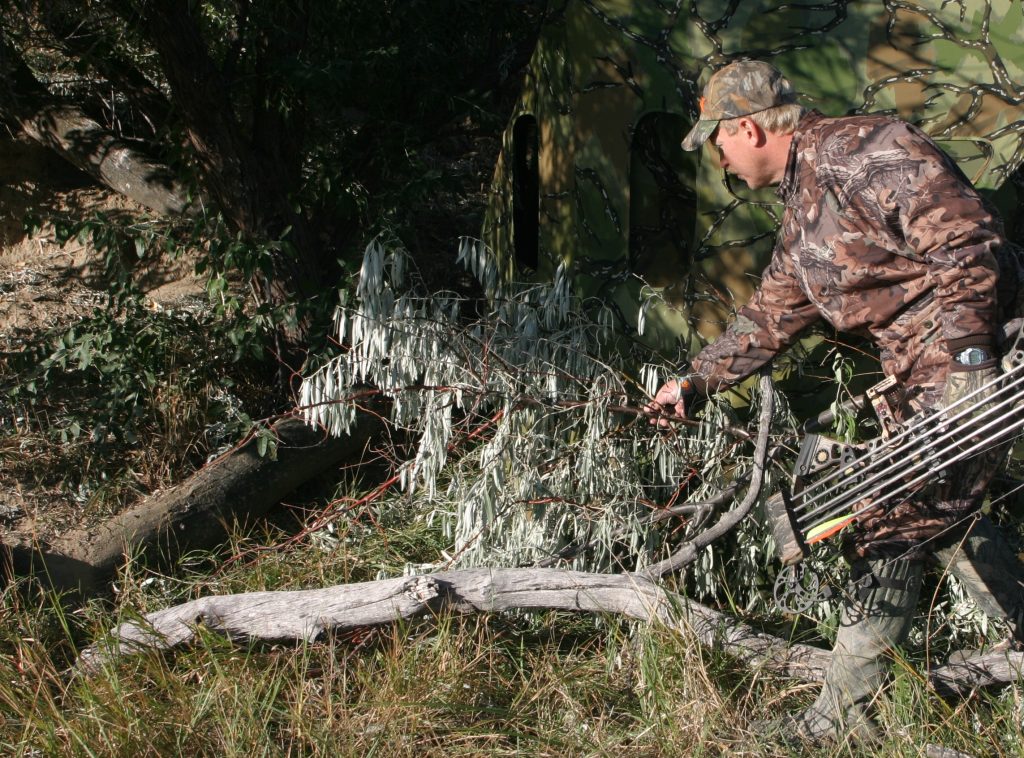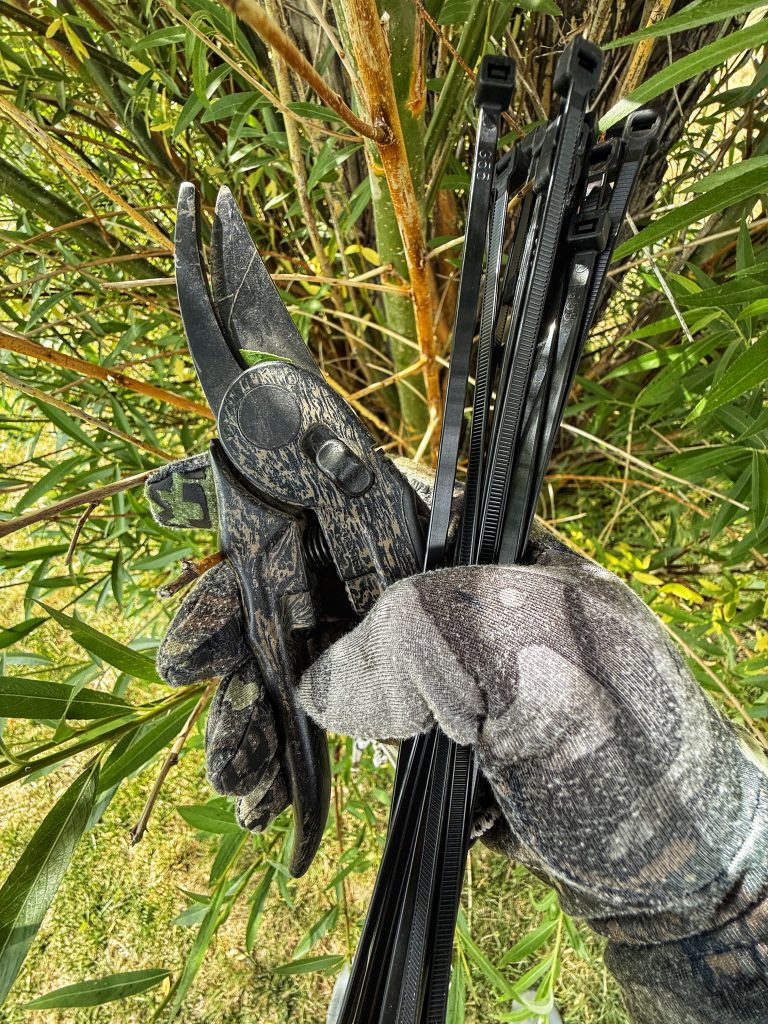DIY: Make Your Tree Stand Disappear
Faking out your family Chihuahua dog by mysteriously disappearing behind a blanket is easy. Staying invisible to a white-tailed deer in its native homeland … not so easy.
Unlike the pampered Chihuahua, a whitetail, and this goes for most game species, spends a lifetime monitoring surroundings looking for the next thing to eat them. Your Chihuahua simply waits by its food bowl for the next fill up. When you hang a tree stand or put out a ground blind, you must do your best to make it disappear.

OFF THE MAIN TRAIL
As you consider a location for your stand or blind, always remember that placing it off to the side of the trail, say by 20 yards, decreases the likelihood a deer will catch your movement or sound, as opposed to a stand 10 yards or less from a trail. Place it farther off to the side if using a firearm. Also consider setting it off to the side and at an angle for a quartering away shot. Deer already past your location have their focus forward for danger and away from your position. This offers you an advantage when drawing a bow or aiming a firearm.
Remember, every yard you back up from a trail increases the possibility of additional vegetation obstructing your shot. Review all shooting lanes for any vegetation that needs to be trimmed for a clear shot.
HEIGHT
For tree stands, an easy starting point is to go higher, unless you suffer from acrophobia, the fear of heights. There is no correct answer for how high a tree stand should be, as terrain, species of tree and the paranoia of deer themselves add to the equation. Nevertheless, in an average setting, tree stands that perch less than 15 feet in the air could catch the attention of attentive deer. Going higher than 25 feet begins to create steep shooting angles and more danger in ascending the stand. Always wear a safety harness and use a safety line while climbing. Look at 20 feet and consider that more limbs and leaves add more camouflage to your stand site.

ADD A LIMB
Once you reach an appropriate height you may discover sparse limbs and leaves leaving you exposed. No need to move to another tree, just bring along a pruner and snip nearby leafy branches. Hoist them into your stand and use zip ties to secure the branches around your platform for additional breakup of your outline. After the hunt, be sure to remove the zip tie litter.
Ground blind users particularly need to “brush in” their blind. Modern ground blinds are offered in a wide variety of camouflage patterns. Choose an appropriate pattern to match your hunting background (not the most popular), and then do your best to add from nature’s workshop. Rotting stumps, down timber, pruned branches and tall stems of grass should be stacked up around the blind. Most commercial blinds include loops to attach native vegetation for ease in extra camouflage.
USE WHAT YOU’VE GOT
Finally, never overlook existing manmade objects to blend your stands with during a hunt. A junked out combine harvester may provide the ideal structure to secure a ladder tree stand to for a field-edge ambush. A collapsed hog shed may offer a structure to secure your ground blind to while making it disappear alongside rotting lumber. Ask an adult to help you and be careful of sharp, rusty objects or structures on the verge of collapse. Play it safe, but sometimes the best way to melt into the background is to use what you have.
Making a stand or blind disappear takes an innovative approach and sometimes a creative use of nature … and even manmade elements.
